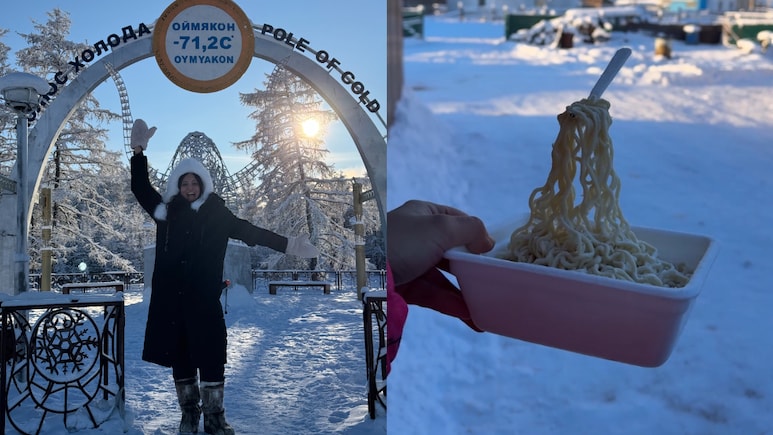
"I like pushing my body to the limit and seeing what it can handle - it's something that excites me," says Ankita Kumar AKA @monkey.inc on her Instagram. Ankita, who has just recently completed 10 full years of creating travel content full-time, is known for heading to places that fall under the realm of extreme tourism.
One such adventure that she embarked on in January this year, was to the coldest habitable place in the world - Siberia, where temperatures drop as low as -70 degrees Celsius.
The Coldest Habitable Place On Earth
Siberia is a vast geographical region in northern Asia and makes up nearly three-quarters of Russia's land area. Due to its location, Siberia remains frozen for most of the year. Summers are extremely short, with temperatures peaking in the low 20s degrees Celsius.
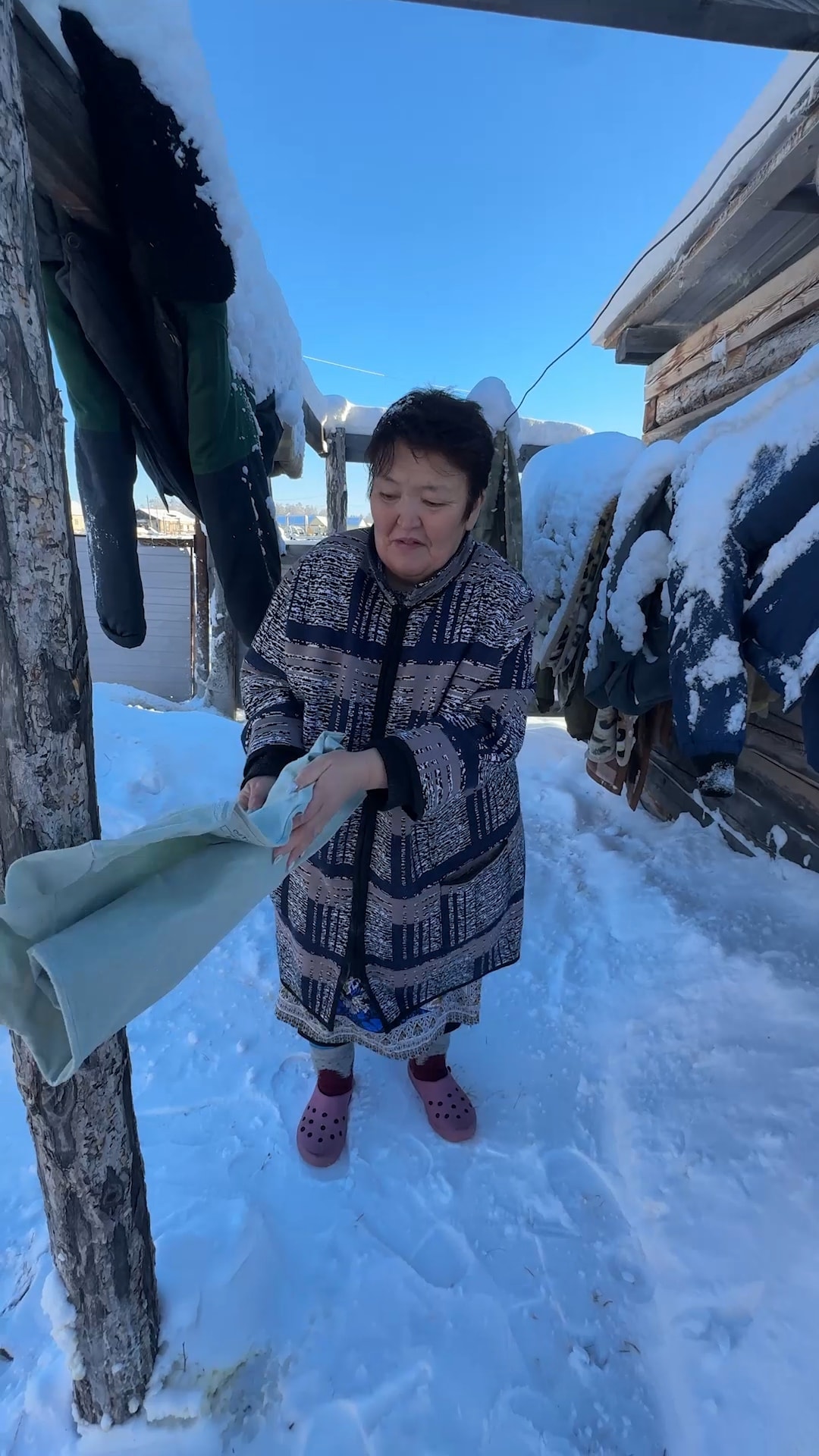
A Siberian woman drying her clothes. Photo: Ankita Kumar
To understand how cold it really is, Ankita breaks it down for us: "It's so cold that your phone will shut down in 10 minutes. It's so cold you aren't allowed to stay outside for more than 15 minutes. It's so cold that vehicles run 24x7 because if they don't, the fuel will freeze. It's so cold that you can't find vegetarian food in the entire market - because nothing survives. Only meat."
How Cold Was It In Siberia?
So, of course, Siberia was on Ankita's bucket list.
But how cold was it actually?
In Yakutsk, Ankita survived -50 degrees Celsius.
In Oymyakon, the mercury dropped to -64 degrees Celsius.
How She Made It To Siberia
Reaching there was not easy either. There is barely any travel information available, especially in English, according to Ankita. Everything from tour guides to blogs and videos, is in Russian.
"It was a nightmare to plan. I sent emails, WhatsApp messages, DMs on Instagram and YouTube. I must've contacted 5-6 people. Some had stopped doing tours. Others didn't respond," she says.
After months of research and planning, she finally connected with two people - Roxana and Eugene - who helped her chalk out an 8-day trip. Eugene took them around Yakutsk, the coldest capital in the world, while Roxana guided them through the infamous Road of Bones all the way to Oymyakon.
Survival Mode: ON
Once in Yakutsk, the first thing they had to do was sort out their gear. "Nothing you own in India can prepare you for this kind of cold. We rented proper jackets, boots lined with fur, and layered up with thermal wear," Ankita recalls.
Phones would die in minutes, face and hands would go numb, and sometimes, it was actually painful to shoot.
"I'd often take off gloves to shoot something and immediately feel pins and needles. My face would ache from the cold," she says.
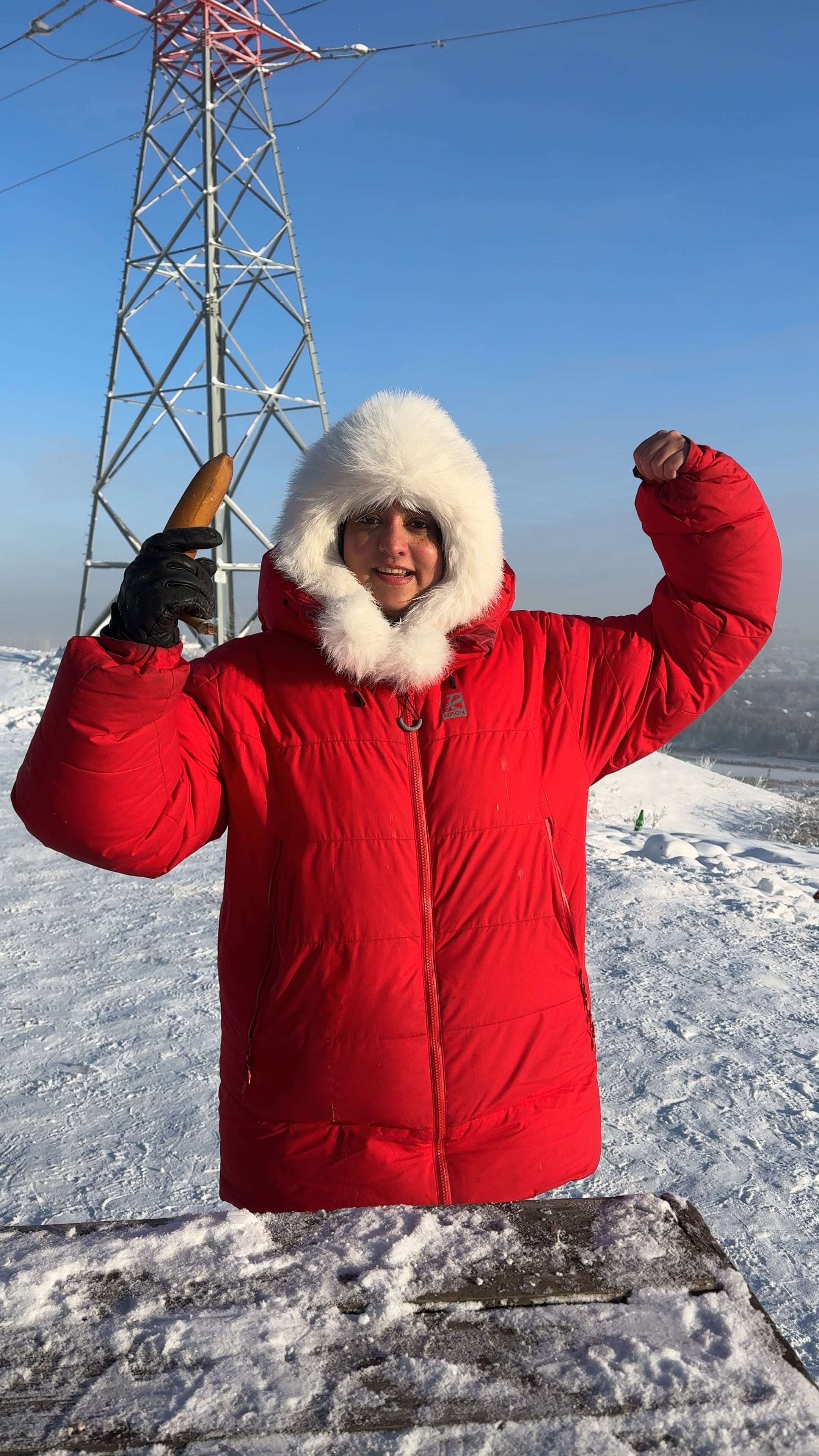
Due to its location, Siberia remains frozen for most of the year. Photo: Ankita Kumar
Despite all this, she and her friend Divya were determined to make the most of every minute. They explored Yakutsk for two days, conducting experiments like flinging boiling water into the air and watching it turn to snow, and freezing fruits mid-air.
An 18-Hour Drive On The Road Of Bones
"The Road of Bones is a route built during Stalin's time. It's called that because it's built literally over the bones of prisoners who died while constructing it under extreme conditions. A million people lost their lives building it," Ankita says.
The 18-hour non-stop drive through the Road of Bones was a different experience altogether. No shops. No pit stops. Just endless icy terrain. "If your vehicle breaks down, you have to pray and wait for help. It's the law to stop stranded cars and help them, because otherwise people can die out there because of the cold," Ankita says.
Eventually, they reached Oymyakon, where they stayed in a homestay hosted by a kind grandma who served them three hot meals a day. From there, they visited reindeer herders, received a certificate signed by the 'Siberian Santa' for surviving in the coldest place on Earth, and even took a polar plunge in a flowing river.
Yes, a river.
"It never freezes because it's constantly flowing. I jumped in three times. Then I ran into a sauna to warm up. Best adrenaline rush ever!" Ankita recalls.
Living Like A Local (On Her Period)
In Siberia, there's no running water (because it freezes, duh), so every house has a separate banya, a sauna hut. That's how you bathe. Heat stones, splash water, and create steam. That's why Siberians bathe only once or twice a week.
Being on her period made it even tougher. "I use a menstrual cup, so I had to carry water to a dry toilet, wash it, clean myself, and somehow manage. It was wild."
However, Ankita says that despite the lack of water, hygiene was top notch. "Everything was spotless. Homes, streets, even grocery shops. So clean despite the extreme weather; it really surprised me," she adds.
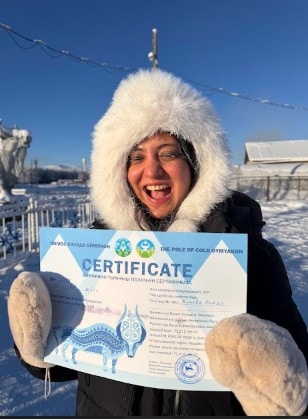
Ankita also received a certificate for surviving the cold. Photo: Ankita Kumar
She mentions that even simple tasks like washing clothes is difficult, because their clothes would freeze and turn hammers within minutes. Even for travelling, while some locals used cars (which would remain switched on all the time), others would use husky and reindeer sleds, which they also tried.
Even daily life is different - plumbing is all above ground because you can't dig into permafrost. Schools have triple doorways to keep the wind and cold out.
She also visited the local schools, and museums, and noticed that all public places have three doors, to properly insulate the interiors.
The Raw Horse Liver... For Food
Food was a struggle, especially if you are a vegetarian.
"No fruits. No vegetables. Just meat. People also eat raw horse liver, because nothing can survive there," Ankita says, scrunching her face. "I've eaten weird stuff before, but this was next level. Luckily, we carried some ready-to-eat meals from India and mixed them with hot water to eat," she says.
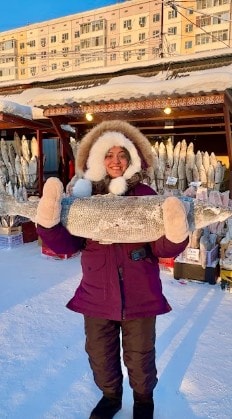
The local Siberian Market, the coldest market in the world. Photo: Ankita Kumar
Ankita also visited the coldest market on earth, where people sell all kinds of meat, and milks are sold in kilograms, because it's frozen.
The People? Opposite Of Cold
Ironically, Ankita says, the people in Siberia? So warm. So kind.
Locals were especially excited to meet Indian women.
"They'd seen a few Indian men, but never Indian women tourists. They were really happy to host us, and a lot of people told us that we were the first Indian women who ever visited Siberia," Ankita says.
Extreme Tourism With A Purpose
"I don't think many Indian influencers have done this. Some YouTubers, yes. But it's not a trend yet," Ankita says. And perhaps that's what makes it even more powerful: travelling not for likes, but for the experience itself.
Was being a woman harder while travelling through Siberia, we ask.
"Absolutely. Periods, no water, dry toilets, freezing cold - it was a lot. But also empowering," Ankita smiles.
Track Latest News Live on NDTV.com and get news updates from India and around the world

